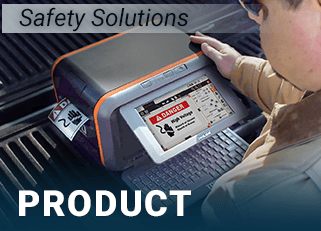Working with Different Generations in Manufacturing
03
February,
2023
9 MINUTE READ

Have you ever been passed over for a promotion because someone had more seniority? How about being left out of a meeting because your "old ideas" are not welcome? No matter what age a person is, there are common ageist stereotypes to hurdle. Even at the most forward-thinking facilities, there could be some activities that keep a negative age gap lingering. Ben Nordman from Obsidian Manufacturing talks about how to improve relations of workers, clients, and others of all ages for #USAMfgHour on Twitter.
Making Connections
Though various generations make up the workforce, some psychological concepts can be brought in that can create misunderstandings or disconnects for potential customers. While it is nearly impossible to find an end-all, be-all solution to marketing to multiple generations, what are some issues manufacturers face when doing so? What are some ways to be more inclusive?
"We try to reach out to the younger generations by being on social media & be as engaging as we can be," said Crescent Software. "For the older generations, we have more of a hands-on experience so they can really get to know our product through demos or speaking on the phone with us."
"Reaching everyone with the same message can be difficult," Drive Source International/Dynamatic. "Our audience spans several generations. They're not all on one platform and some aren't digitally capable at all, so we have to use multiple forms of marketing."
"Agreed. It's best to use different platforms and tweak the messages across those to accommodate as many audiences as possible," DuraTech Industries said.
"Platforms and message language varies with age," Nigel T Packer of PelaTis Online said. "Different ages want different things. make a table of the platforms and relate it to the age of the target. What works on Twitter may not work on Instagram."
"Technology is our biggest hurdle," said Sue Nordman of Obsidian. "Our marketing doesn't reach businesses that don't use the Internet. Looking for ideas on overcoming them. We have several customers that have no website and only fax things."
High-impact and interactive print media is one format that Curt Anderson of B2Btail gave as a solution to reach leads who respond best to voice and print.
"This is a great question. We market to many different people or avatars, but we try to keep it simple and focus on the education of our processes," Chenango Valley Technologies said. "We work with a wide variety of customers young and older and size start-up to corporations."
"Focus on your why before ever finding the solution," Ruby Rusine of Social Success Marketing said. "There are so many "solutions" that are not for you, no matter how shiny and inviting they are."
"It's important to define customer personas & market to them where they live," Dar-Tech said. "Our target is mostly white-collar chemists, lab techs, purchasing agents, & small-business owners. We find LinkedIn, tradeshows & trade associations most effective for reaching them."
"Our target audience seems to be between 45-55," WiscoLift said. "I'm not sure if that relates to how and where we are marketing or if the decision-makers for our products happen to be that age. Interested to see how everyone else answers this question."
"Making video content that appeals to everyone, all ages," Striven Software said. "We think a lot about the tone we want to set, how different people would react to it. Regardless of age, people just want to be spoken to like humans. People are people, not ages."
"Knowing which platform to best target your ideal market can be a challenge, generationally," 360 Outcome said. "We find that catering content to various generations on each SM platform works well!"
"Trying to be everywhere to reach everyone," John Buglino of Optessa said. "I contribute on and engage with my audience on a select number of channels. For those, I miss, rely on my website to capture their interest."
One big difference between multiple generations, Ben Nordman said, is the way information is found and consumed. "Finding the perfect unique mix between print, word of mouth, and online marketing is key for us at Obsidian to reach both younger and older generations," he said.
Addressing the needs and values of different age groups takes a focused intent. According to a blog by Brandman University, there are three ways to successfully manage a multigenerational workforce:
- Flexibility: Blanket approaches to leadership and management styles can be divisive. Aptitude and productivity are different for each individual regardless of age. Work schedules and certain job tasks might need to be adjusted for a worker of any age.
- Dispel generational stereotypes: For example, training and education have no age limits. Continuous improvements, education, and training are important components of sustaining lean programs as well as maintaining health, safety, and compliance goals.
- Collaboration and mentoring: Create an environment that builds the team. Group workers on a project based on the skills they can provide for the project's success.
Ben Nordman then asked the group about their companies' flexibility: How is being flexible an essential part of managing employees and accommodate their needs?
"The days of butts in seats is over," Dar-Tech said. "The paradigm has shifted. People want flexibility. Manufacturers that get it are making the shift to attract a workforce by meeting their needs. It's give-and-take, win-win. 2020 proved companies can succeed with remote workers."
"Great thought process behind this question! As a leader, it's vital to know the challenges that varied generations face & being accommodating to work/life balances. Ex, Knowing your millennials may expect flex time whereas seniors may not even know what it means," 360 Outcome said.
"It's also important that we stop with the ?one-size-fits-all' policies," DSI/Dynamatic said. "If one person prefers the 3-2-2 work week and another prefers a 5-2, then they should be accommodated. It's tough, though. Some don't feel that flexibility should go to just certain people."
"Each generation has a varying perception," DCSC Inc. said. "I've found listening is extremely important to understanding how to manage."
"Encourage the differences in others and what they bring to the table is important within an organization," Sue Nordman said. "Diversity is so important and that means with age differences as well as the others that we think of when we hear the word diversity."
"Know each one's gift/skillset," Rusine said. "Know where they are great at - and not. Encourage and market an ?open door policy.'"
"Leadership is all about getting to know the person and what they want to do," CVT said. "It's really like raising kids. You cannot motivate them if you don't know them and 1 size does not fit all."
"Can you give me examples of being flexible? I understand flexible hours could be beneficial to both the employer and employee," WiscoLift said. "We allow employees to take their vacation days BEFORE they earn them. If they leave the company before earning them they are deducted."
"No one is a perfect employee, both younger and older generations have shortcomings (that isn't a reason to stereotype either). A flexible manager should show patience, not be judgmental or else risk overshadowing the immense good a worker can do," Striven said.
"I took a course once on generational gaps in the workplace," DSI/Dynamatic said. "It's important to know what your demographics are (mostly Gen X? Mostly Boomers? Mostly Millennials?) and then learn how they prefer to work. What's most important to them?"
"Flexibility is a good one, but raise you to empathy. Being a leader or having a leader that has empathy, though rare, is a game-changer for everyone involved," Buglino said.
"In a way, it's like managing people from different countries, language tends to be different. Encourage people to find common ground," Sharon Landis of S. Landis Consulting said.
"A couple specific things that you can do as an employer are to adjust hours for employees that might not want to work full-time as they get older or cross-training your employees to keep younger employees engaged in work," Ben Nordman said. "At Obsidian, we are a multigenerational, family-owned business. What is your best advice to all those out there that are the same as us to make it all work?" he asked.
"Dar-Tech is owned by the son of the prior owner who retired. His secret? Treat every employee like family and be willing to go to bat for them personally or professionally," Dar-Tech said. "We all are family. There is no outsider. And there is no politics. We are a team."
"Treat everyone, no matter the size of the org, like family. Do not lose that connection with your employees," Buglino said.
"I have worked for many family businesses. The first thing that needs to happen is to have complete buy-in from all generations of the family," CVT said. "Without that, employees see it as a big negative. Been there done this. The family sets the tone."
"Do not work at the dinner table. You do your best work and care for yourself when you're able to separate business from your life outside of the office," Striven said.
"Education and understanding are the keys to happiness here. When people are taught and can understand others better, then there can be a cohesive ?click' to the company," Striven said.
"Respect the experience of the elders and embrace the enthusiasm and fresh perspective of the youth," Cleveland Deburring Machine Company said.
"In the past few weeks, I've made it a point to start talking to younger people coming up in the industry. I love the fresh perspective. We all were there once," DCSC said.
Knowing who you're working with is important. While individuals might have their personal preferences, starting with generational differences is good.
"Accountability is the biggest thing for us," Ben Nordman said. "Keeping everyone accountable in their jobs is important to getting business done and there should be that accountability everywhere!"
Bridging Gaps
The bottom line of any business is obviously very important, and the sales and customer service team is essential to that, he said. "What do you think are some considerations that need to be taken into account when communicating with customers?"
"Be transparent, resist the urge to over-promise, & set limits to keep you + your team sane," Buglino said.
"You have to know the customer, who they are, what they do," CVT said. "You have to know who you are talking to in order to help them better. The more you know about them, the more that you can help them."
"Talking to them like a peer no matter what their ages are is important," DSI/Dynamatic said. "Always treat them as you'd want to be treated. Kindness always rules and is loved by everyone."
"They matter. They are heard. They are family. Their success is our success. A consultative approach. Solutions not sales. Partnership," Dar-Tech said.
"In sales, I actually think that sometimes an older generation person can bring more to the table than a younger generation person. Experience carries a high value," Sue Nordman said.
"Training sessions for the sales team so they know how to use the technology, don't waste time while on the phone troubleshooting. As for sale calls - keep it simple. Be kind," Striven said.
"Having an understanding of how each generation communicates is a great starting point," Ben Nordman said. "While individual differences are obviously there, knowing that each generation wants to do their business different ways (electronic vs. over the phone) can help."
We all have a company culture, whether it's written down and carefully thought out or not. How can you mix multigenerational considerations into your company culture?
"Have everyone from each generation offer input when deciding or changing that culture. That way, you all own it," Rusine said.
"As a leader, I try to blend my team's differences to aid each other & the company. You must find the right mix with the ingredients you have," Sue Nordman said.
"Appealing to everyone through team-building events is a great idea. Also, provide opportunities for everyone to feel included in whatever it is the company is doing," said DSI/Dynamatic.
"Live it and be it until you feel the need to change it," Buglino said. "Culture needs to adapt with the times and even if it changes, never forget the values that got you where you are today."
"Truth," DCSC said. "Value and our past are what paved the way to pay our bills today." DCSC then added the importance of the positive concept of work ethic.
"In every family, there are multiple generations. If the office is a family then everyone makes his/her contribution," Dar-Tech said. "Wisdom and experience as well as a fresh perspective, innovation, and new ideas and perspective. All contribute to growth. Change is inevitable."
Three things the Obsidian team said it involves in company culture, with direct effects on multiple generations, are:
- Building age diversity in teams
- Encourage mentoring in both directions (We can all learn from each other.)
- Find strengths and utilize them
Ben Nordman then asked: What are some obstacles that you and your company face regarding multiple generations? How are you getting over those obstacles?
"The word ?obstacle' is key," Dar-Tech said. "Not to perceive older workers as obstacles to jump over/workaround until they retire. They are not furniture. Embrace knowledge management. Tap into the data in their heads. Ask for advice. Be helpful. Realize storytelling is valuable."

"Again technology. Team up a less technological person with one more knowledgeable," Sue Nordman said.
"We have a pretty good team. People of all generations and backgrounds," CVT said. "Everyone here is willing to help each other and it all goes back to communication."
"Ensuring success to me is success to others. Being in communication with all of the other leaders with Optessa to align on metrics & goals," Buglino said.
"I find technology is one of the biggest obstacles that you have to get through in a business," Ben Nordman said. "There are some big differences in how it is used and how often it is used and understanding both generation's reliance on it is key."
Improving business all around takes continuous work. Workplaces can reach out to human resources professionals and other business assistance services to learn more on how to follow current workplace inclusion standards.
About #USAMfgHour
Anyone who champions U.S. manufacturing can join in on a new conversation each week on Twitter using the hashtag #USAMfgHour. The chat starts at 11 a.m. Pacific Standard Time/2 p.m. Eastern. Share positive blog posts, helpful articles, news, important information, accomplishments, events, and more with other manufacturers and supporters from throughout the country.
Are you interested in hosting a #USAMfgHour chat? Contact organizers @CVTPlastics, @DCSCinc, and @SocialSMktg.
RELATED RESOURCES

Facing Hard Truths by Embracing Soft Skills
Qualifications and technical skills are essential for workers to have in today's market. How about those soft ...
Read
The New Realities of Virtual Events
In the past year, businesses have had to let go of traditional tradeshows and other in-person events. Virtual ...
Read
Technical Learning Systems in Manufacturing
There are various educational programs and resources available to help manufacturers attract and retain ...
Read.png)


